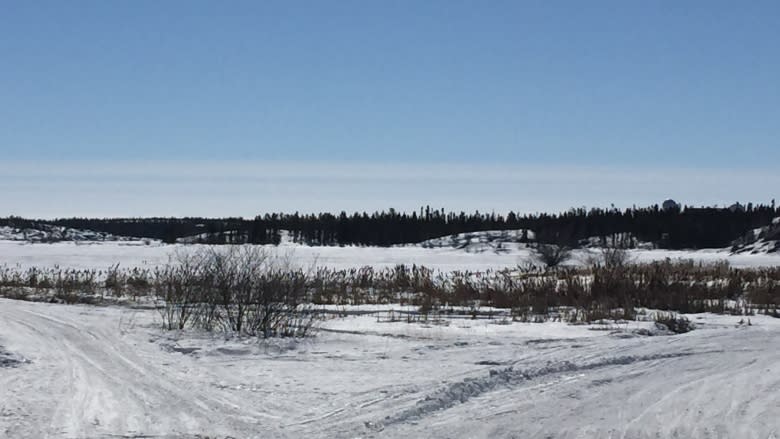Decades-old study shows Kam Lake's arsenic levels 50 times over drinking water standard
The Northwest Territories government is warning Yellowknife residents not to swim or fish in Kam Lake, after a newly-unearthed study showed arsenic levels over 50 times higher than the recommended level for drinking water.
The territorial government issued a public health advisory Monday morning. The information is the same as an advisory issued in April of 2016, with the addition of Kam Lake.
The data, based on a study conducted in 1989, shows that Kam Lake has dissolved arsenic levels exceeding 500 parts per billion — higher than any other lake in Yellowknife. Less than 10 parts per billion is an acceptable standard for drinking water, according to Health Canada.
"It's very old data that we found in archives over the past few months," said Dr. Andre Corriveau, the territory's chief public health officer. "Somebody noticed that study, and brought it to my attention... I can't say whether, back then, if there was some media around it.
"I assume it must have been released at some point, but I can't document that."
- FEATURE | Is Yellowknife ready to reckon with its toxic legacy?
Despite the age of the study, Corriveau says he believes the levels are still very high in Kam Lake, which is located near former tailings ponds for the now-closed Con Mine.
"Some lakes haven't changed much in decades," he said. "It depends on the hydrology of the water... but even if, let's say, it had decreased by half, it's still in the zone above where we think it should be used recreationally."
Don't fish, swim, harvest berries
The health advisory cautions residents not to swim, harvest nearby plants and berries, or fish for consumption in Kam Lake — the same warning issued for many lakes in Yellowknife, including Jackfish Lake and Frame Lake, though the level is much higher.
"The issue is pretty much the same... for recreational purposes," Corriveau said. "You would get health impacts more quickly at a 500 level than a 200 level, but for practical purposes, for our advisory, it doesn't make a lot of difference."
Corriveau said that it is safe to walk around Kam Lake, canoe or kayak on it, or catch and release fish.
"The hazard would come through ingestion of contaminated water or mud," he said. "We would advise people not to make tea from the water... if it was my dog, I certainly wouldn't bring them there to drink water on a regular basis."
Kam Lake wasn't included in recent arsenic studies. Corriveau said that's because the department of environment and natural resources, which organizes the studies, was focusing on the Giant Mine remediation site.
The health department, he said, only conducts studies when drinking water sources are potentially affected.
Corriveau said that he believes the department of environment and natural resources is planning a study of Kam Lake in the future, but he isn't sure of a potential guideline.
In the meantime, "it was a gap in the advisory last year," he said, "so here it is."
'It is a surprise'
Grant Beck, a longtime resident of the Kam Lake area who has run a local kennel since 1989, says that although the levels are surprising, he doesn't expect it to affect residents in the area.
"It is a surprise that it's that high," he said. "But I don't think it was a concern. No-one used it for swimming, no-one uses it for anything, except when it freezes over."
Locals, Beck said, use the lake for snowmobiling and walking their dogs in the winter months. In the summer, residents hike around the lake, and do a small amount of catch-and-release fishing.
Beck said that he remembers a time when the lake was a lagoon located near a Con Mine tailings pond, stymieing residential development. However, now that the area has become more attractive, local development has taken place, with the Lakeshore subdivision filling up on Kam Lake road.
Despite the revelations, though, Beck doesn't forsee any changes to the way residents — both old and new — use the area.
"I've been running my dogs there [on the ice], for 30, 35 years," he said. "no-one's used it for anything else."



